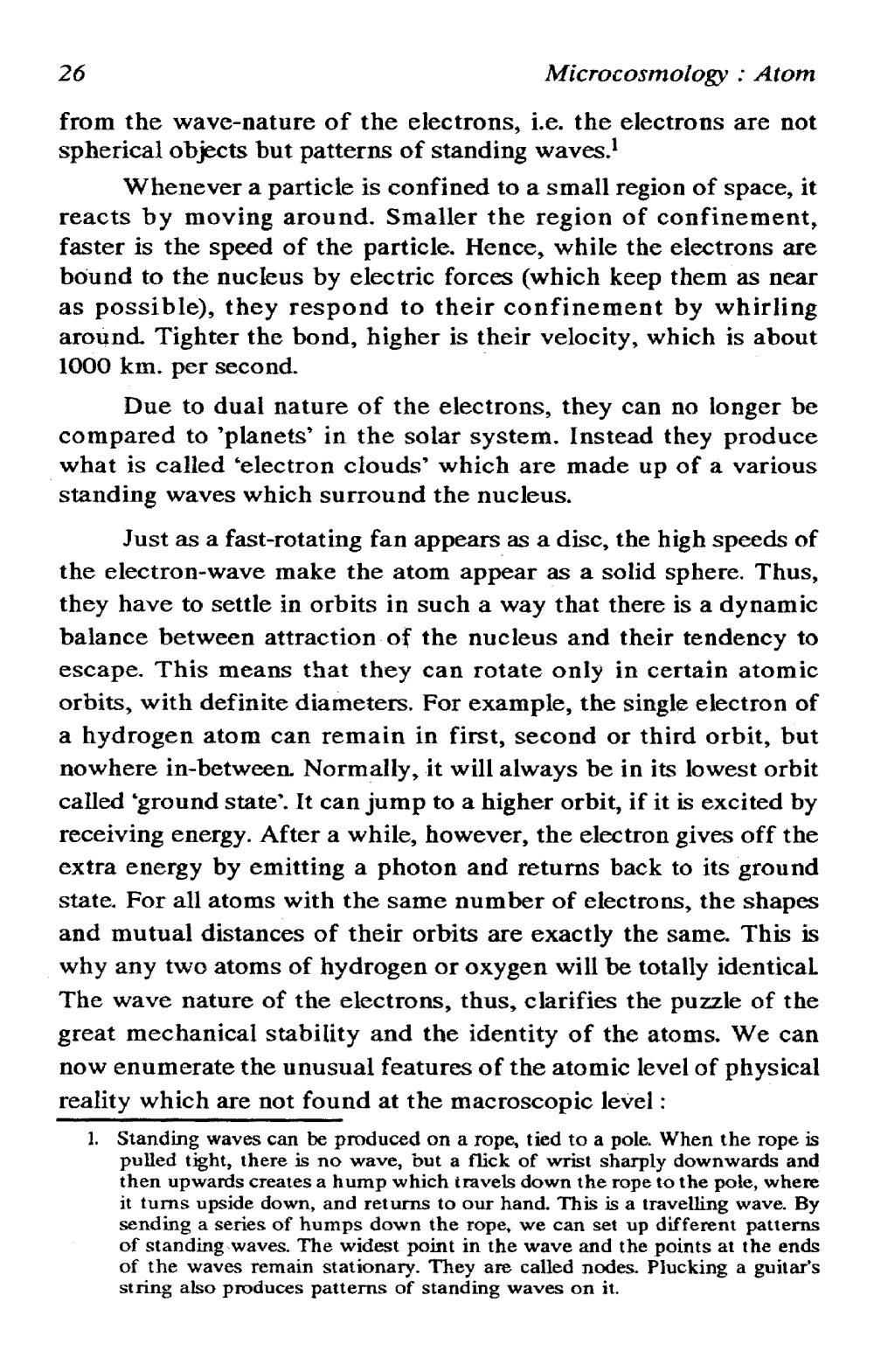________________
26
Microcosmology : Atom from the wave-nature of the electrons, i.e. the electrons are not spherical objects but patterns of standing waves.
Whenever a particle is confined to a small region of space, it reacts by moving around. Smaller the region of confinement, faster is the speed of the particle. Hence, while the electrons are bound to the nucleus by electric forces (which keep them as near as possible), they respond to their confinement by whirling around. Tighter the bond, higher is their velocity, which is about 1000 km. per second.
Due to dual nature of the electrons, they can no longer be compared to 'planets' in the solar system. Instead they produce what is called 'electron clouds' which are made up of a various standing waves which surround the nucleus.
Just as a fast-rotating fan appears as a disc, the high speeds of the electron-wave make the atom appear as a solid sphere. Thus, they have to settle in orbits in such a way that there is a dynamic balance between attraction of the nucleus and their tendency to escape. This means that they can rotate only in certain atomic orbits, with definite diameters. For example, the single electron of a hydrogen atom can remain in first, second or third orbit, but nowhere in-between. Normally, it will always be in its lowest orbit called 'ground state'. It can jump to a higher orbit, if it is excited by receiving energy. After a while, however, the electron gives off the extra energy by emitting a photon and returns back to its ground state. For all atoms with the same number of electrons, the shapes and mutual distances of their orbits are exactly the same. This is why any two atoms of hydrogen or oxygen will be totally identical The wave nature of the electrons, thus, clarifies the puzzle of the great mechanical stability and the identity of the atoms. We can now enumerate the unusual features of the atomic level of physical reality which are not found at the macroscopic level : 1. Standing waves can be produced on a rope, tied to a pole. When the rope is
pulled tight, there is no wave, but a flick of wrist sharply downwards and then upwards creates a hump which iravels down the rope to the pole, where it tums upside down, and returns to our hand. This is a travelling wave. By sending a series of humps down the rope, we can set up different patterns of standing waves. The widest point in the wave and the points at the ends of the waves remain stationary. They are called nodes. Plucking a guitar's string also produces patterns of standing waves on it.




